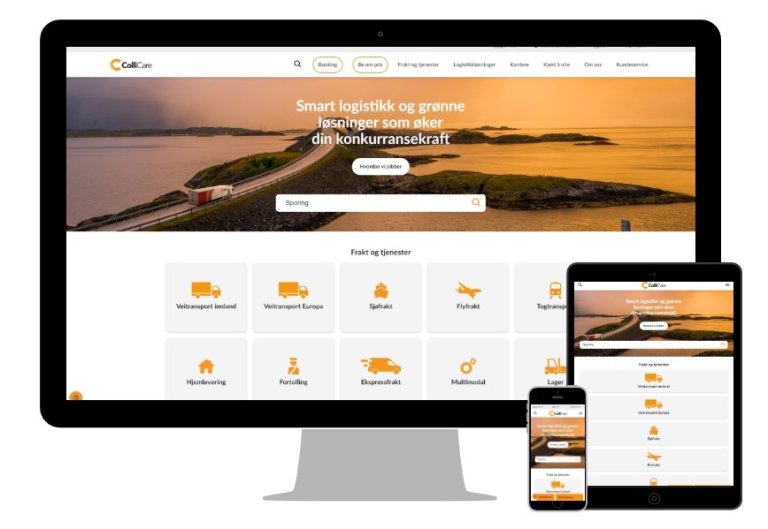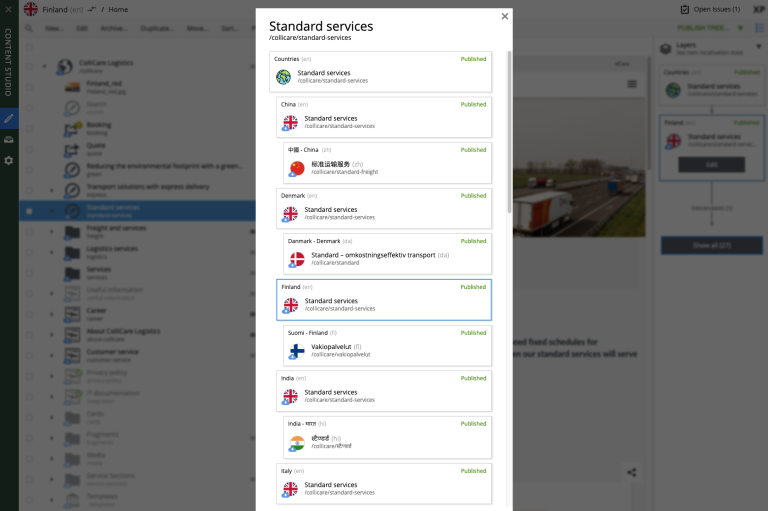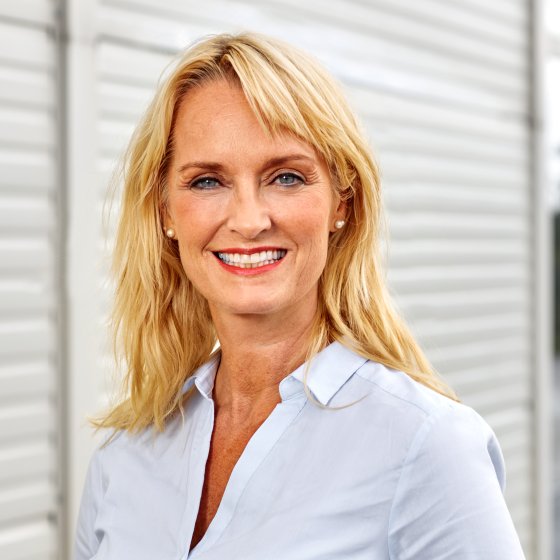ColliCare Solves Localization Challenges with Layers
How Enonic and a multinational organization with multiple offices and languages in several countries solved the riddle of localization.

How Enonic and a multinational organization with multiple offices and languages in several countries solved the riddle of localization.
ColliCare Logistics is a provider of logistics services within road, sea, rail, air freight, third-party logistics, storage, and eCommerce, with offices in Norway, Sweden, Denmark, Finland, the Netherlands, Germany, Lithuania, Latvia, Poland, Italy, Turkey, China, and India, as well as an agent network across the globe.
Starting in 2007 with the acquisition of an older company, ColliCare has since been growing fast. Due to their successful expansion, ColliCare had grown out of their existing CMS and needed a new and more future-proof solution. After inviting several vendors for presentations, Enonic was chosen in spring 2020 based on the new layering functionality.
With 12 countries represented in the CMS and more on their way, ColliCare needed a solution that allowed for efficient and feasible sharing of content across different languages and regions. Additionally, visibility and SEO in all the local markets were tremendously important.
Localization is a complex issue. This is mainly due to differences in structures and URLs, editorial teams, access control, and schedules for e.g. news or product launches across various sites and regions. Add to this the challenges of search, search results, and content reuse—and finally combining everything into a unified and reasonable user interface.
ColliCare deemed that maintaining separate sites and services was too inefficient, and a one-to-one translation within a given system only would resolve a few of the mentioned challenges. This is where Enonic’s content layering entered the scene.

ColliCare was the first Enonic customer to utilize the brand new layers functionality, starting with a prototype in August 2020 and then finally publishing the websites in November and December the same year. So, what is the Enonic layering solution, exactly?
In the authoring interface of Enonic, Content Studio, a layer is a given instance of a site—e.g. an English root site with landing pages, images, persons, and so on. A layer beneath this is called a child layer, and inherits all the content items—like a live copy. Editors can pick and choose which items to localize and even add their own content which is specific only to this layer—and potential child layers beneath this again.

Each layer also has separate access controls, e.g. allowing an Italian content team to have access to the Italian layer, while not having access to the other countries. This ensures that too many cooks spoiling the broth never happens.
The structure of ColliCare’s websites is as follows: one root layer called “ColliCare Common” consists of basic information that can be reused across all sites—like an “About” section, employees, press releases, and images from a synced DAM. Then there is a “Countries” layer, where the entire site structure which is common for all countries is created. This layer is never published, only functioning as a template for all child layers.

ColliCare wanted every country to have an English layer in addition to a localized layer, resulting in a total of 30 layers with their own top-level domains across 12 markets. All content is first made in English, before every relevant content item is localized in the respective markets, including Norwegian, Chinese, and Danish—which in turn have their own, local content.

All common content is first created in the common parent layer, before it trickles down into the different child layers. Here the local editors pick it up, localize, and publish it, or archive it if they don’t want that specific content in their layer.
Following the adoption of layers and publishing the new websites in December 2020, the content editors of ColliCare have a much easier time to share content and create common content. It is easier to maintain multiple languages than before, and news publishing is more instantaneous.
In addition, due to most of the structured content being in one unified system, the lightning fast Enonic search makes it a breeze for editors to find what content items they are looking for. Also, the components in Content Studio makes it easy to build landing pages in addition to standard page templates.
Enonic is a flexible headless CMS solution and the organization is eager to learn and adapt to customer needs. It’s been a pleasure to follow Enonic on the journey, especially the development of the layer functionality, experiencing rapid progress.
Monica Heggen
Digital Marketing Consultant
ColliCare

Learn how our customers use Enonic. Get ideas from the many cool projects!

The Norwegian Labor and Welfare Administration used Enonic and Next.js to migrate their massive site to a modern, headless architecture. Without compromising the editor experience.

Learn how the Norwegian Building Authority (DiBK) migrated from Optimizely to Enonic in this detailed case study.

How Enonic and a multinational organization with multiple offices and languages in several countries solved the riddle of localization.